Radiant Heating
A forced-air heating system keeps indoor spaces warm by blowing heated air around. Radiant heating works in a different way. The warmth radiates from a heat source –an old-fashioned radiator, a baseboard heating unit, or a radiant floor. People who suffer from allergies and respiratory ailments usually prefer radiant heating because it keeps indoor air more free of dust and other irritants.
Considering radiant heating for your home? Dr. Energy Saver has the skills and experience needed to install any of the various types of radiant heating systems in your home. Contact your local dealer today!
Different types of radiant heating systems
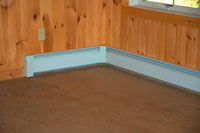
Hot water baseboards. With this popular form of radiant heating, hot water from a central boiler is pumped into pipes that run along the bottom of the wall on one or more sides of a room. The hot water pipe is surrounded by aluminum fins, but both fins and pipe are covered by a steel baseboard housing.
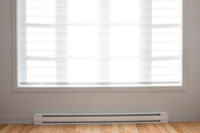
Electric baseboard heaters. This type of radiant heat works just like a hot water baseboard, but an electric resistance heating unit acts as the heat source. Heating an entire house with electric baseboards is inefficient and very expensive.
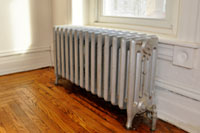
Radiators. Old-fashioned radiators take up quite a bit of space in a room, but are very effective at radiating heat. These systems sometimes were designed to be warmed by steam rather than by hot water.
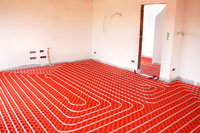
Radiant floor heat. This heating system utilizes the entire floor as a giant radiator. The floor can be heated by electric resistance cables installed beneath the finished floor, or by plastic tubing through which hot water is circulated. Hot water (hydronic) radiant floors are much more energy efficient than a radiant floor heated with electric cables. For more information, visit Radiant Floor Heating.
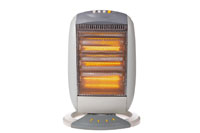
Infrared heaters. This type of heater can be electrical or gas-fired. Many infrared heaters are portable units not designed to work as a permanent whole-house heating solution. However, these compact heaters are often used in workshops, garages, and utility rooms where short-term heat is required.
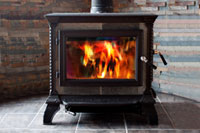
Wood and pellet stoves. Heating with firewood or pellet fuel can provide considerable savings over heating with electricity or fossil fuel, but more work is required on the part of the homeowner. Most people use this type of radiant heating to reduce heating costs rather than as a total substitute for other central heating systems.
Discover the benefits of radiant heating in your home
Dr. Energy Saver specializes in all types of home heating systems, including radiant heating. If you think this solution might be the right fit for your home, contact your local dealer today! We offer audits for whole home energy performance evaluation and free estimates on individual services needed.
Looking for a price? Get a no cost, no obligation free estimate.
